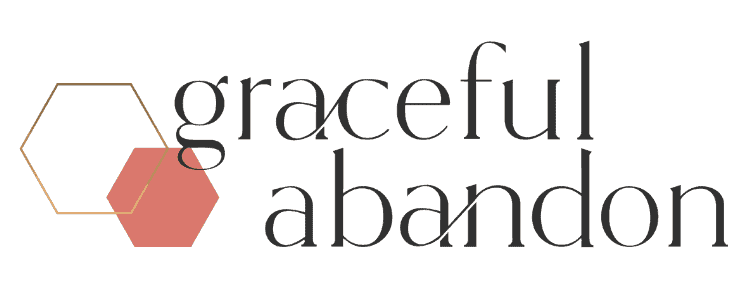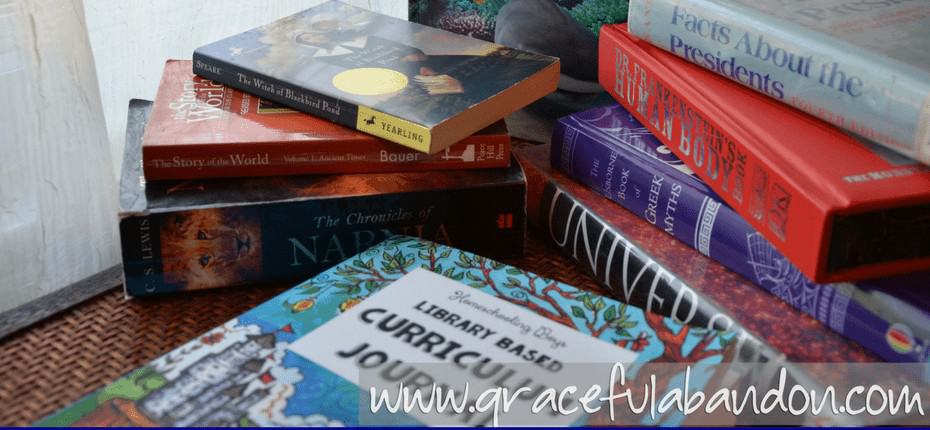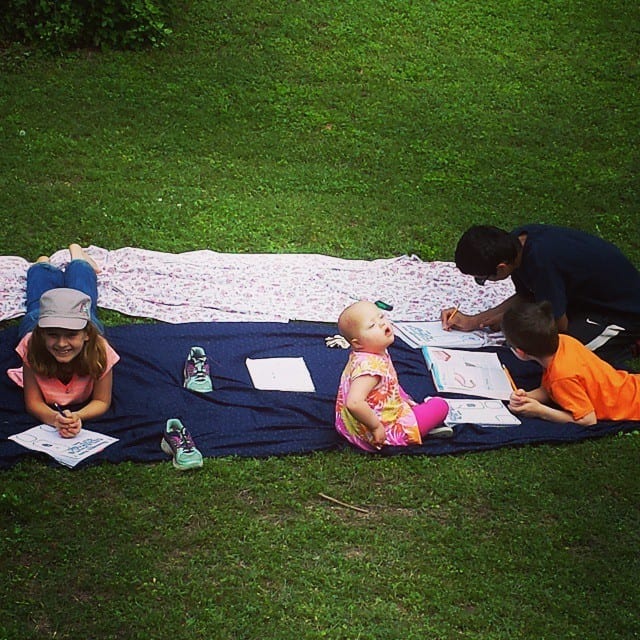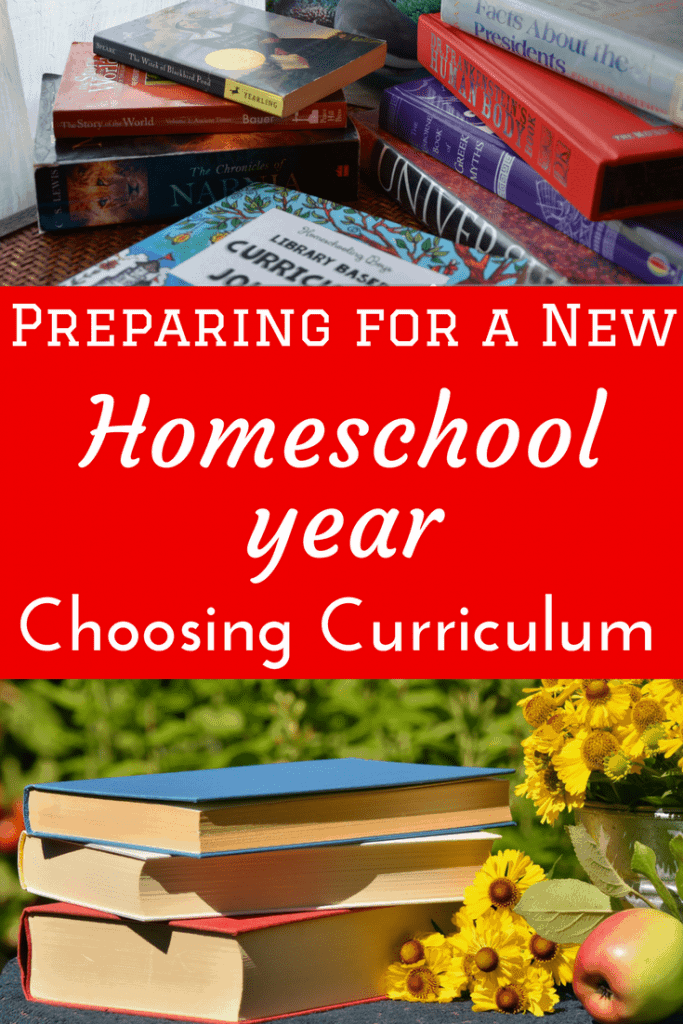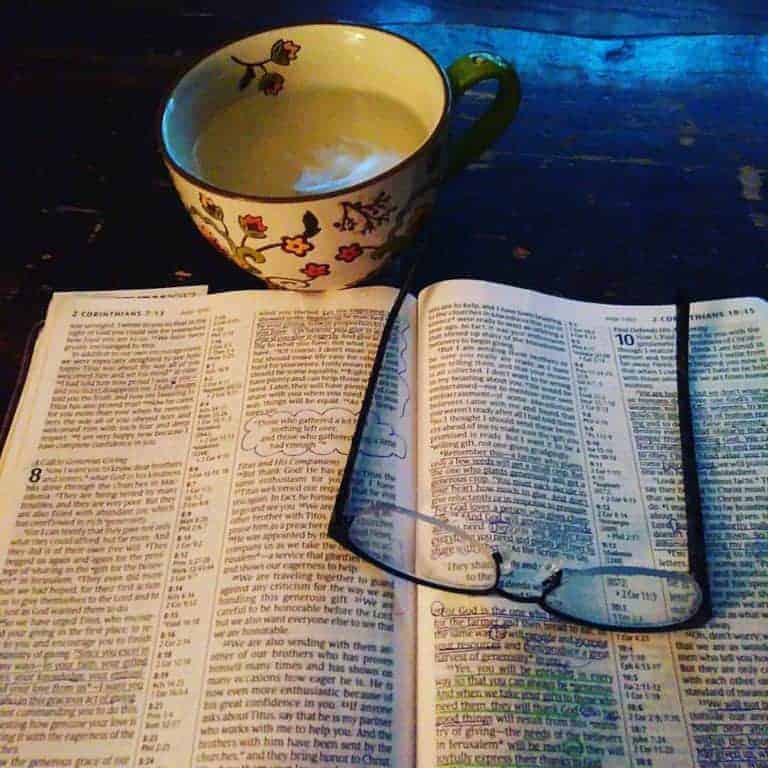Getting Ready For A New Homeschool Year: Choosing the Right Curriculum
We may earn money from the products/companies mentioned in this post. As an Amazon Associate I earn from qualifying purchases. For more information, read our Terms & Disclosures.
One of the most exciting (and maddening) things about getting ready for a new homeschool year is choosing the right curriculum. It’s so hard to know what the right choices are, especially once you take to the blog world and read about all of the exciting things that are available to you. So how exactly do you settle down to the business of choosing the right curriculum?
Well, first of all, you make sure you’ve prepared yourself. That’s the foundation of the new year, mama. Your mind, your heart, and your focus need to be in the right spot. But next? When choosing the right curriculum think about the right style for your learners, the right layout for you as teacher, and the content you need to cover. And then, stick to your choices without distraction.
This is the second article in a series; be sure not to miss out on any of it!
Getting Ready for A New Homeschool Year Series:
1. Preparing Mom
2. Choosing the Right Curriculum
3. Creating Lesson Plans (coming soon!)
This post contains affiliate links.
Choosing the Right Curriculum Style
How do you decide what style of curriculum is best? If you’re new to the homeschooling world, trial and error may be how this happens. If you’ve been around for some time, then you probably already have an idea of what’s best for your kids. Let’s look at some questions you can ask when choosing the right curriculum style:
- Does my child learn best by hearing, reading, or doing?
- Does my child prefer to dive deeply into a subject and explore it from all angles, or read concise information that has already been gathered for him?
- Does my child need to experience the information to fully retain it?
- Does my child learn well independently?
There are tons of other questions you can ask, and jot down any that seem applicable to your family as you settle in to plan. However, these are the ones that never seem to change for me; I ask them each and every year. Yes, the answers seem to change as my children grow and mature, and also from subject to subject.
All children learn by a mix of hearing, reading, and doing so I always look for curriculum that incorporates all three. However, some of my kids struggle more than others with reading, while excelling at hands on work. For those children, I try to do more project oriented learning (science labs are fantastic for this kind of student!). Some children do better by hearing, and if it’s a busy year for me then I invest in audiobook copies of the textbooks whenever available so they can read along with the CD.
If a child likes to saturate themselves in a topic they get fascinated by, I’m more apt to pick a curriculum that incorporates many living books to complement the main text, or to seek some out on my own. I may even pick out a few movies that are appropriate. For instance, in world history this year we’ll be using biographies for our read aloud time, and watching some period movies. We’ll also be making a dinner to reflect the food, customs, and experiences of a certain time/geographical region a few times throughout the year.
If you have independent learners, often they like clearly defined goals and tasks. I have one of these and she loves a workbook, a clearly defined assignment, and to sit down and get it done. She’s pretty easy to accommodate, as you can imagine!
Choosing the Right Curriculum Layout
What type of layout is best for you? Here are some options to consider when choosing the right curriculum layout:
- Heavy parental involvement (mom is needed to navigate each subject, all day long)
- Moderate parental involvement (mom takes the lead on some subjects, but not all)
- Light parental involvement (mom explains what is expected, answers questions, and turn the children loose with all the resources they need for the day)
Personally, I’ll have a mix of all three. In our home, we do heavy involvement with mom (and dad!) for kindergarten to 2nd grade. In 3rd and 4th grades, my involvement become more moderate. In 5th grade, I start to pull back a bit so that for junior high and high school they are much more independent and my involvement level is more supervisory than anything. These choices are also going to be defined by the purpose you have set for each student (we talked about that in the first part of this series).
My absolute favorite curriculum layout (and I got NO compensation for sharing this with you!) is Notgrass History. They have “bonus downloads” on their website that make life easier for all of us. In addition to colorful textbooks (my kids really do appreciate that!), at the end of each chapter they have clearly defined assignments. In the bonus downloads, I can print out a weekly checklist for each student and a weekly grading/evaluation sheet for me to use to keep records with.
Choosing the Right Curriculum Content
Some curriculum comes all boxed up and ready to go (Notgrass is like this; I can even order a set of all the supplemental reading they suggest if I’m using their literature program alongside of the history so that I don’t have to search for them when we are ready). Other curriculum choices (such as Tapestry of Grace) involve heavy library (or maybe Amazon) involvement because they tell you what to use, but you have to round it up.
Some curriculum contains enough work to be a full credit course, other curriculum needs you to add activities and read supplemental books and simply provides a framework you need to fill out. Other curriculum is so dense with information you may or may not get through it in a year. You get to pick, because you are the teacher!
Also, look at your state’s standards. Some have very detailed requirements for each subject and each grade, others give you more latitude. This will help guide your decision as well.
Some of Our Favorites
Just in case you’re wondering what we are using, I’ll share our absolute favorites from our journey to choosing the right curriculum for our core subjects:
- Science: Apologia, hands down every year. I love Apologia science, and more importantly so do my children. It’s frugal because the same textbook will get used over and over (I have toddlers and teens, so re-usable curriculum is a huge frugal perk) and all we do is order a fresh notebooking journal for each student. We will literally use Apologia for our science needs from first grad all the way up to high school graduation.
- History:
- Grades 1-4: We like to use Story of the World. The kids seem to really like me reading it to them and the activity guide has some fun ideas.
- Grade 5-8: You could absolutely use SOTW a second time, doing more of the work this time around. However, we just fell in love with Mystery of History and like to use it. The work load can be kind of hefty for this age if you try to do absolutely everything, so I picked and chose what was right for us. This past year, though, we mixed it up and used Notgrass Civics as my kids wanted to explore the working of government during the election year and have now declared Notgrass to be their absolute favorite curriculum of all time. That works for me, as it’s super parent-friendly.
- High School: My kids decided they didn’t want to keep using MOH after checking out Notgrass’ civics course, Uncle Sam and You. They liked MOH, but wanted something different. We explored multiple textbook options, and settled on Notgrass yet again. For their high school classes, the potential is there for each child to earn a full 3 credits and not just one if they complete all of the assignments each day (1 credit history, 1 credit Bible, 1 credit English/Literature). As I shared above, we love the planning tools, as well as the activities and textbooks.
- Math: We stick with Teaching Textbooks. It works well, is independent, and grades their work for me. They love it and so do I!
- English/Grammar/Literature:
- First Language Lessons for the Well Trained Mind: We used this in the beginning, but it was time consuming for me. I do like it, and if I weren’t schooling six children I’d probably never have looked for something different.
- Christian Light Publication: This is a consumable workbook program that requires input from the teacher in the lower levels, but becomes independent with time. I found it to be pretty advanced, and really liked it (but be sure to do the placement test as your kids may not be ready for their grade level, depending on what you’ve used in the past).
- Notgrass: for high school, my students will be getting this credit in with their history work
You’re Making the Right Choice Already; Stay the Course
Let me let you in on a little secret: whatever curriculum you are using, if you’re homeschooling your child and being an active participant in their eduction, you’re doing great! There might be a better choice, and it’s okay to look for it if you need it. But if you’ve already found something that works (like us with Apologia) don’t be afraid to stay the course. There’s nothing wrong with sticking with what works for you and your family instead of chasing each new shiny option that comes along. In my experience, that just leads to chaos.
So take a deep breath, check out your options, and move forward with joy. Don’t worry about making the wrong choice; if you absolutely can’t live with it for a year, you can always drop it and try something new! This is your homeschool, and you (and hubby and God) get to direct its course. Enjoy getting ready for the new homeschool year by choosing the right curriculum; it’s a fun part of the journey!
P.S. Next week we’ll talk about how to plan it all out, so come back for part three!
